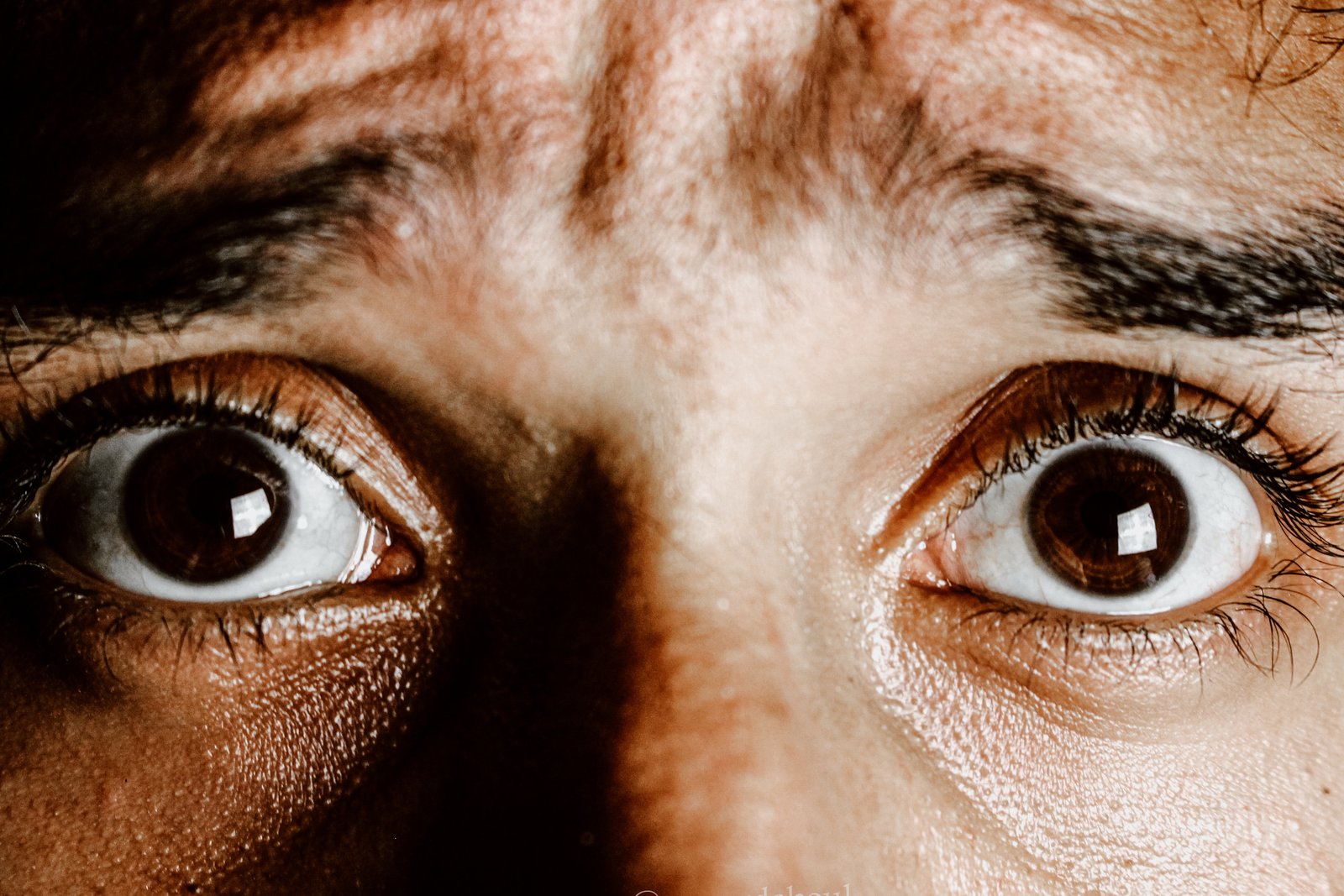
Do you ever wonder what unusual fears lurk in the minds of others? We all know about common phobias like arachnophobia (fear of spiders) or acrophobia (fear of heights), but what about the lesser-known phobias that often go unnoticed? This captivating article will uncover list of phobia you’ve probably never heard of before. From the fear of peanut butter sticking to the roof of your mouth (arachibutyrophobia) to the fear of the number 13 (triskaidekaphobia), these phobias will surprise and intrigue you. Discover the fascinating stories behind these unique fears, and gain insight into the minds of those who live with them. Prepare to be amazed as we delve into the world of uncommon phobias and shed light on the fears that make each individual’s experience extraordinary. So, let’s dive in and explore the intriguing world of lesser-known phobias together!
What are phobias, and how do they develop?
Phobias are extreme and irrational fears that can cause significant distress and anxiety in individuals. They can develop due to various factors, including traumatic experiences, learned behaviours, and genetic predispositions. Phobias often manifest as an intense fear response to specific situations, objects, or activities. When someone with a phobia encounters their fear trigger, they may experience a range of physical and psychological symptoms, including rapid heartbeat, shortness of breath, and a sense of impending doom.
Understanding the origins of phobias is crucial in comprehending the complexity of uncommon phobias. While common phobias like the fear of spiders or heights can be traced back to evolutionary survival instincts, uncommon phobias often arise from more unique circumstances. These fears may develop due to specific childhood experiences, cultural influences, or personal idiosyncrasies. The human mind is a fascinating labyrinth, and phobias offer a glimpse into the intricate workings of our fears and anxieties.
List of Phobia and Their Definitions
1. Arachibutyrophobia – The fear of peanut butter sticking to the roof of your mouth. People with this phobia may experience extreme discomfort or even panic when consuming peanut butter due to the fear of it adhering to their palate.
2. Triskaidekaphobia – The fear of the number 13. This phobia is deeply rooted in superstition and is often associated with bad luck. Those afflicted with triskaidekaphobia may go to great lengths to avoid situations or circumstances involving the number 13.
3. Pogonophobia – The fear of beards. Individuals with pogonophobia may experience intense anxiety or distress when in close proximity to people with facial hair. This fear can stem from various factors, including a negative experience or general discomfort with the unfamiliar.
4. Ephebiphobia – The fear of teenagers. This uncommon phobia often arises from negative beliefs or stereotypes about adolescents. Ephebiphobia can significantly impact social interactions and may lead to avoidance behaviours or heightened anxiety in the presence of teenagers.
5. Xylophobia – The fear of wooden objects. People with xylophobia may experience fear or aversion toward wooden furniture, objects, or even forests. Associations with past traumatic events or general discomfort with the texture or appearance of wood can trigger this fear.
6. Ablutophobia – The fear of bathing or washing. Ablutophobia can be debilitating, leading to poor personal hygiene and social isolation. This fear may stem from a traumatic experience related to bathing or a general aversion to water.
7. Siderophobia – The fear of stars. Individuals with siderophobia may experience intense anxiety or fear when exposed to the night sky or celestial objects. This phobia can be related to a fear of the unknown or a sense of insignificance in the vastness of the universe.
8. Ommetaphobia – The fear of eyes. Ommetaphobia can cause severe distress and anxiety in individuals, making it challenging to engage in everyday activities. This fear may be triggered by a traumatic experience involving the eyes or a deep-seated discomfort with the vulnerability and intimacy associated with eye contact.
9. Chorophobia – The fear of dancing. People with chorophobia may experience anxiety or panic attacks when confronted with dance-related situations. This fear can stem from self-consciousness, social anxiety, or negative past experiences involving dancing.
10. Nomophobia – The fear of being without a mobile phone or being unable to use it. Nomophobia is a relatively new phobia that has emerged with the prevalence of smartphones and technology dependence. Individuals with this phobia may feel extreme distress or panic when separated from their mobile devices.
The prevalence of uncommon phobias
While uncommon phobias may seem unusual or even absurd to some, they are more prevalent than one might expect. According to research, approximately 9% of individuals experience at least one phobia at some point, with specific phobias being the most common anxiety disorder. Although data specifically focusing on uncommon phobias is limited, anecdotal evidence suggests that these fears are more common than they appear. The uniqueness of uncommon phobias often makes them less recognized or discussed, leading individuals to suffer silently without seeking help or support.
The prevalence of uncommon phobias highlights the importance of raising awareness and fostering understanding of the diverse range of fears. By shedding light on these lesser-known phobias, we can encourage empathy, support, and acceptance for those with unique anxieties.
Understanding the psychological impact of uncommon phobias
Uncommon phobias can have a profound psychological impact on individuals, affecting their daily lives, relationships, and overall well-being. Living with an uncommon phobia can be isolating, as others may struggle to comprehend or relate to the fear experienced. This isolation can lead to increased anxiety, depression, and social withdrawal.
The psychological impact of uncommon phobias extends beyond the immediate fear response triggered by phobic stimuli. Individuals may develop avoidance behaviours, limiting their activities and experiences to avoid encountering their fear. This can result in missed opportunities, decreased quality of life, and stagnation.
It is essential to recognize that uncommon phobias are not simply irrational fears. They are real and valid experiences for those who live with them. Empathy, understanding, and access to appropriate support are crucial in helping individuals navigate the psychological impact of uncommon phobias and regain control of their lives.
Famous examples of individuals with uncommon phobias
Uncommon phobias can affect anyone, regardless of their fame or status. Several well-known individuals have publicly shared their struggles with unique fears, shedding light on the challenges those living with uncommon phobias face.
One such example is the famous singer Justin Timberlake, who has openly discussed his struggles with arachibutyrophobia. Despite his success, Timberlake experiences anxiety and discomfort when consuming peanut butter, often resorting to alternative spreads to avoid the fear trigger.
Another notable example is the renowned actress Nicole Kidman, who has spoken about her battle with lepidopterophobia, the fear of butterflies. Kidman’s fear stems from a traumatic childhood incident involving a butterfly, highlighting the lasting impact of uncommon phobias on an individual’s life.
These examples serve as a reminder that uncommon phobias can affect anyone, regardless of their public image or perceived strength. These individuals have helped raise awareness and reduce the stigma surrounding uncommon phobias by sharing their stories.
Overcoming uncommon phobias – treatment options and therapies
Overcoming uncommon phobias requires a comprehensive and individualized approach. Treatment options and therapies for uncommon phobias are similar to those used for more common phobias, focusing on gradually exposing individuals to their fear triggers in a controlled and supportive environment.
One of the most effective treatments for phobias is cognitive-behavioural therapy (CBT). CBT helps individuals identify and challenge their irrational thoughts and beliefs surrounding their phobias. Through exposure therapy, individuals gradually confront their fears, building resilience and reducing anxiety.
In some cases, medication may be prescribed to help manage anxiety symptoms associated with uncommon phobias. However, medication alone is not a long-term solution and is often used with therapy to maximize results.
Alternative therapies, such as hypnotherapy or virtual reality exposure therapy, may also be beneficial in treating uncommon phobias. These approaches aim to provide a safe and controlled environment for individuals to confront their fears, facilitating desensitization and promoting empowerment.
Coping strategies for living with uncommon phobias
Living with an uncommon phobia can be challenging, but there are coping strategies that can help individuals navigate their fears and lead fulfilling lives.
1. Education and understanding: Learn as much as possible about your phobia. Understanding the origins and triggers can help demystify the fear and reduce its power over you.
2. Seek professional help: Contact a mental health professional specializing in phobias and anxiety disorders. They can provide guidance, support, and evidence-based treatments tailored to your needs.
3. Build a support network: Connect with others who share similar fears or join support groups. Sharing experiences and strategies can provide validation and encouragement.
4. Practice relaxation techniques: Engage in relaxation exercises, such as deep breathing or meditation, to help manage anxiety and promote a sense of calm.
5. Gradual exposure: Consider gradually exposing yourself to your fear triggers safely and carefully. Start with small steps and gradually increase exposure over time.
6. Self-care: Prioritize self-care activities that promote overall well-being, such as exercise, healthy eating, and sufficient sleep. Taking care of your physical and mental health can help build resilience and reduce anxiety.
Remember, overcoming an uncommon phobia is a journey that requires patience, perseverance, and support. With the right tools and resources, leading a fulfilling life while managing your unique fears is possible.
How to support someone with an uncommon phobia
Supporting someone with an uncommon phobia requires empathy, understanding, and patience. Here are some ways you can offer support to your loved ones or friends:
1. Listen without judgment: Provide a safe space for them to share their fears and concerns. Avoid dismissing or minimizing their experiences.
2. Educate yourself: Take the time to learn about your phobia and its impact. This will enable you to understand their perspective better and offer appropriate support.
3. Be patient: Recognize that overcoming a phobia is a process that takes time. Avoid pressuring or rushing the individual to confront their fears.
4. Offer encouragement: Celebrate small victories and milestones along their journey. Encouragement and positive reinforcement can boost their confidence and motivation.
5. Accommodate their needs: Be mindful of their triggers and respect their boundaries. Offer support when needed, but also allow them space when necessary.
6. Encourage professional help: If their phobia significantly impacts their daily life, encourage them to seek professional help. Be supportive of their decision to pursue therapy or treatment options.
By offering understanding, compassion, and support, you can make a significant difference in someone’s journey towards overcoming an uncommon phobia.
Frequently Asked Questions
What causes phobias?
Phobias often develop in childhood and can be triggered by a traumatic event, but they can also appear in adolescence or adulthood. Genetic and environmental factors may also play a role in the development of phobias.
Can I have more than one phobia?
Yes, an individual can have more than one phobia.
Do phobias get worse over time?
Without treatment, phobias can become more severe over time, impacting an individual's ability to function normally in their daily life.
How are phobias diagnosed?
A mental health professional, such as a psychiatrist or psychologist, can diagnose a phobia through a detailed interview and diagnostic guidelines.
How common are phobias?
Phobias are the most common type of anxiety disorder. They affect nearly 19 million adults in the U.S., or 8.7% of the U.S. population.
Conclusion
Uncommon phobias shine a light on the intricacies of the human mind and the diversity of fears within society. While these fears may seem peculiar or even humorous to some, for those who live with them, uncommon phobias are very real and can significantly impact their lives.
By exploring the fascinating world of uncommon phobias, we gain insight into the complex nature of fear and anxiety. Raising awareness and fostering understanding of these unique fears is essential in promoting empathy and support for those with uncommon phobias.
Let us embrace the diversity of human experiences and create a world where individuals with uncommon phobias are met with acceptance, understanding, and the opportunity to live fearlessly.



